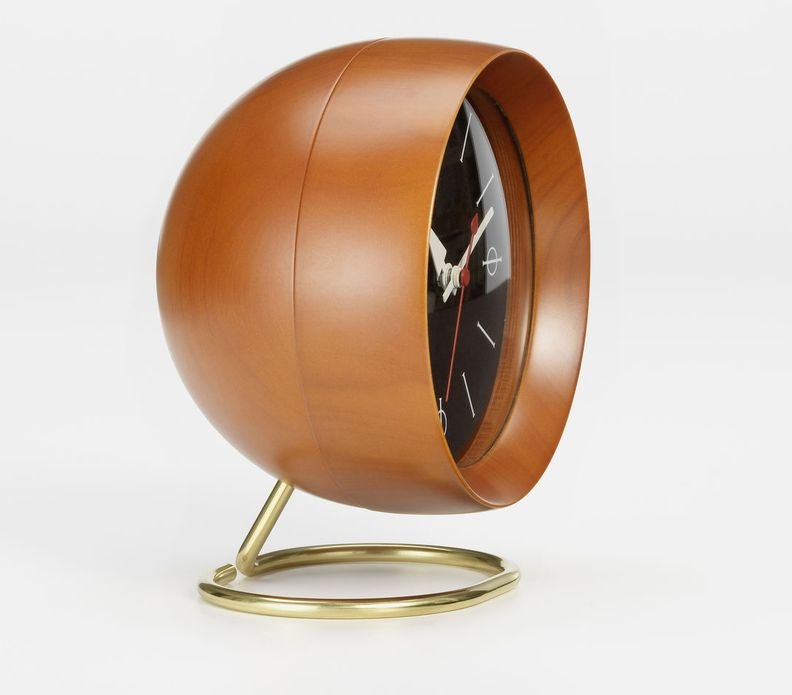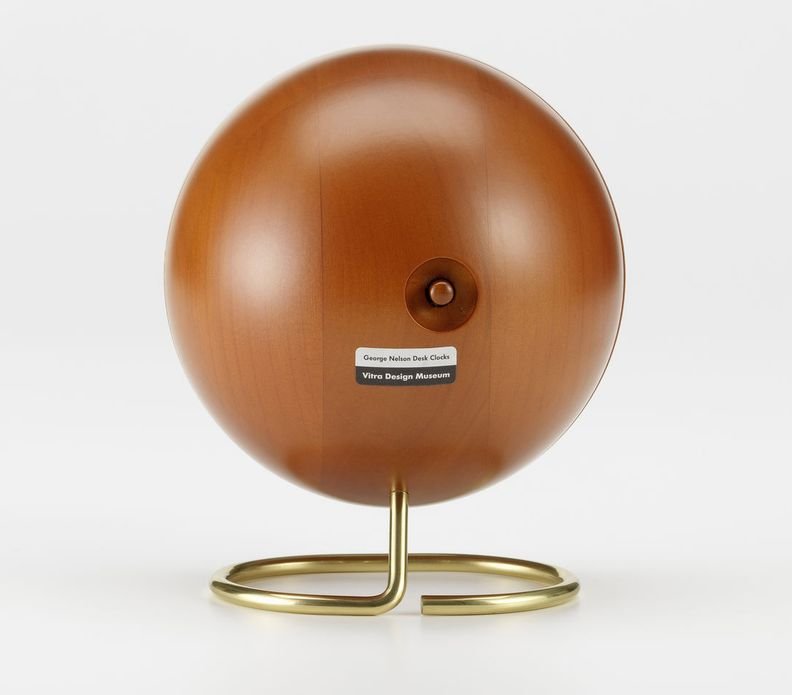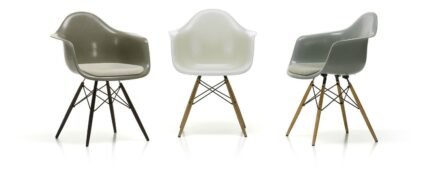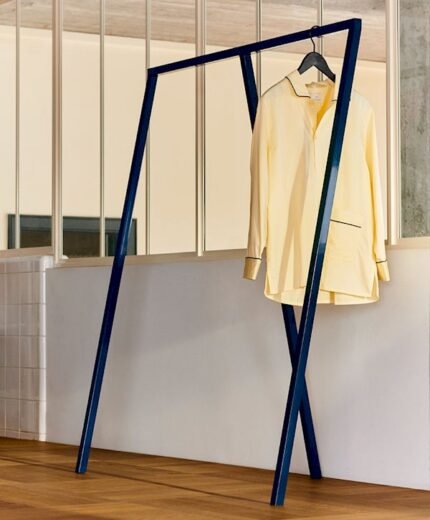The Genesis of Chronopak
The post-World War II era marked a significant transformation in design sensibilities, ushering in the mid-century modern movement characterized by minimalism, functionality, and a distinctive aesthetic. It was during this period that George Nelson emerged as a pivotal figure in modern design. His work, including the Chronopak desk clocks, epitomized the era’s innovative spirit and design ethos. Born in 1908, Nelson was an architect, writer, and designer who became a central figure in American modernism. His collaboration with the Howard Miller Clock Company proved to be a fruitful partnership that left a lasting impact on the design world.
In the late 1940s, Nelson was appointed as the design director for Herman Miller, where he established himself as a visionary leader. This role allowed him to explore and execute his ideas with a certain degree of freedom and creativity, leading to the creation of iconic pieces like the Chronopak desk clocks. These clocks were not just timekeeping devices but also artistic statements that embodied the principles of mid-century modern design.
The Chronopak desk clocks were crafted using innovative materials and technologies that were emerging at the time. The use of molded plastics, metal alloys, and other modern materials allowed for sleek, streamlined designs that were both functional and aesthetically pleasing. Nelson’s designs often featured clean lines, geometric shapes, and a sense of playful elegance that set them apart from traditional timepieces.
Moreover, the technological advancements of the era influenced the functionality of these clocks. Electric mechanisms replaced traditional wind-up systems, ensuring precision and ease of use. The integration of these new technologies with Nelson’s design philosophy resulted in products that were ahead of their time, both in terms of aesthetics and functionality.
Understanding the origins and historical context of the Chronopak desk clocks provides a deeper appreciation of their significance. These clocks are more than just decorative items; they are a testament to the innovative spirit of the mid-century modern movement and George Nelson’s enduring legacy in the world of design.
Design Elements and Legacy
The Chronopak desk clocks, designed by George Nelson in 1947 and 1953, stand as quintessential examples of mid-century modern design. One of the defining characteristics of these clocks is their minimalist yet functional aesthetic. Nelson’s design philosophy emphasized simplicity and practicality, which is evident in the clean lines and uncluttered forms of the Chronopak clocks. The use of bold colors, such as vibrant reds and deep blues, not only adds visual interest but also complements the geometric forms that are a hallmark of Nelson’s work.
Materials play a crucial role in the overall appeal of the Chronopak desk clocks. The clocks often feature a combination of wood, metal, and glass, each chosen for its aesthetic and functional properties. The warm tones of the wood provide a natural contrast to the sleek, polished metal accents, while the glass faces offer clarity and durability. This thoughtful blend of materials not only enhances the visual appeal but also ensures the longevity of the clocks, making them cherished heirlooms for generations.
In terms of functionality, the Chronopak clocks distinguish themselves through their precision and ease of use. The clear, legible numerals and straightforward clock hands make time-telling an effortless task. Additionally, the clocks’ compact size and sturdy construction make them suitable for a variety of settings, from office desks to bedside tables. This versatility is a testament to Nelson’s ability to create designs that are both beautiful and practical.
The legacy of the Chronopak desk clocks extends far beyond their initial release. These timepieces have influenced contemporary designers, who often draw inspiration from Nelson’s innovative use of color and form. Collectors and design enthusiasts continue to value these clocks for their timeless appeal and historical significance. Even in today’s rapidly evolving design landscape, the Chronopak desk clocks remain relevant and admired, embodying the enduring allure of mid-century modern design.










































Reviews
There are no reviews yet.